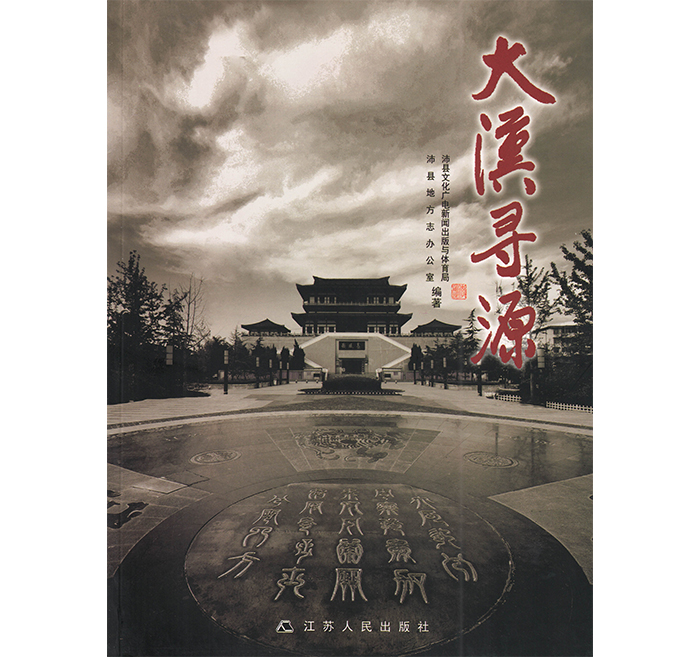
 Visit Appointment
CN
Visit Appointment
CN

Basic Information:
Title of a book:《The big man seeks the source》
Author:Compiled by Peixian Bureau of Culture, Radio, Television, Press, Publication and Sports and Peixian Local Chronicle Office
Publishing house:Jiangsu People's Publishing House
Time of publication:In October 2017
Brief introduction:
The publication of the Great Han Searching for the Source responds to a long-standing cultural call: searching for the source of Han Culture. This is an easy problem to clarify, but due to the understanding of "Han culture" there is a "dual" understanding: one is inclined to 400 years of "dynasty culture", the other is inclined to 2,000 years of "national culture", and the two are tangled in the "origin", so the exploration of source seekers often because of the difference in setting goals and talk. As the hometown of Liu Bang, the Emperor Gaozu of Han Dynasty, Pei County cherished the cultural relics left by him. The Gefengtai, Gefeng Monument, Sishui Pavilion, Han Ancestral Temple, Lu Mu Tomb, Liuli Well, Fan Well, Fan Lane, etc., have all been protected and restored after vicissitudes of life. As for the intangible cultural heritage left by Emperor Gaozu of Han and the members of Peixian meritmen Group, it is the spiritual food for the villagers in Peixian.
To inherit is to inherit, to cherish is to cherish, these are simple, local, folk behavior, and rarely rise to the metaphysical level of cultural studies to understand.
In 1984, the county committees and governments of Peixian and Fengxian jointly organized the "Fengfeng Pen Fair", which was a good start for the commemoration of Liu Bang, Emperor Gaozu of Han Dynasty, and the study of Han culture. At the same time, Pei County Party Committee and the county government presided over the reconstruction of the Gefengtai, the re-engrave the Gefeng tablet, the new sculpture of Liu Bang, the statue of Emperor Gaoxu of Han Dynasty, the restoration of the Sishui Pavilion, the dredging of the glass well, and the reconstruction of the shooting platform. Fengxian County Party Committee, the county government is remediation of Zhongyang Li, rebuild the dragon mist bridge.
Twelve years later, Peixian County Party Committee and the county government rebuilt the Gefengtai again, moved the Gefeng Monument and the statue of Liu Bang, built the Han Gazu Ancestral Temple and the Han Soul Palace, and founded the "Liu Bang Culture Festival" in 1996. It is held every two years and has been held for 11 consecutive years. There is no doubt that these cultural projects are of positive value to commemorate Liu Bang, to inherit and carry forward Han culture, and to enhance the cultural popularity of Peixian.
What needs to be further expanded is the in-depth study of the history, origin and spirit of Han culture. Because, no matter from the perspective of "dynastic culture" or "national culture", "Han culture" is a national and historical proposition, which is both huge and long. Just as a pottery bowl cannot hold a river or a sea, and a bamboo basket cannot hold a mountain or a mountain, any attempt to use local culture to promote national or national culture is an unrealistic dream.
It is based on this understanding that Mr. Tian Binge, aiming to pursue the "source" of "Han culture", wrote the Great Han Searching for the Source. The book was paired with old images taken 20 years ago during a photographer's investigation of Chinese culture.
|
Previous:NO!
Next:《Total Record of Han Dynasty Paintings, Pei County Volume》51 |
Back to list |